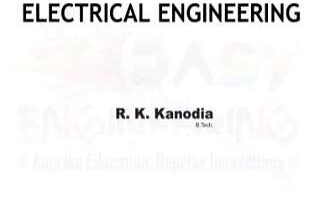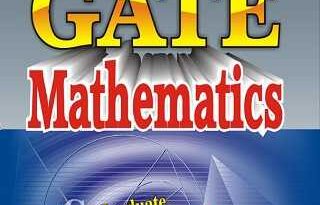Operation and Control in Power Systems
Download Free PDF Book “Operation and Control in Power Systems” By P.S.R. Murty. The main objective of power system operation and control is to maintain continuous supply of power with an acceptable quality, to all the consumers in the system. The system will be in equilibrium, when there is a balance between the power demand and the power generated.
Contents
- 1 Book contents
- 1.1 1. Overview of Power Systems
- 1.2 2. Power System Operation
- 1.3 3. Power System Control
- 1.4 4. Control Centers and SCADA
- 1.5 5. Challenges in Power System Operation & Control
- 1.6 6. Modern Trends
- 1.7 Course Material For Power System Operation and Control
- 1.8 UNIT 1-POWER SYSTEM OPERATION AN CONTROL …
- 1.9 Power System Operation & Control (20A02701a)
- 1.10 POWER SYSTEM OPERATION AND CONTROL
- 1.11 Operation and Control in Power Systems
- 1.12 Power System Operation and Control – GitHub
- 1.13 Power System Operation and Control
- 1.14 ee8702 –power system operation and control
Book contents
- Introduction
- Load Flow Analysis
- Economic Operation of Power Systems
- Optimal Load Flow
- Unit Commitment
- Load Frequency Control
- Control of Interconnected Systems
- Voltage and Reactive Power Control
- Introductions to Advanced Topics
- Objective Questions
- Answers to Objective Questions
- Index
| Book Name | Operation and Control in Power Systems |
| Author | P.S.R. Murty |
| Category | Electrical And Electronics Engineering Books, Electrical Engineering Books, Electronics & Communication Engineering |
| Book Language | English |
| Publisher | BS Publications |
| Pages | 423 |
| Country | India |
| Book Size | 16 MB |
Operation and Control in Power Systems PDF Download
“Operation and Control in Power Systems” is a key area in electrical engineering that deals with the reliable, efficient, and economic operation of the electrical power grid. Here’s a structured overview to help you understand it better:
1. Overview of Power Systems
A power system consists of three major components:
-
Generation – Producing electrical energy from various sources (thermal, hydro, nuclear, solar, wind, etc.).
-
Transmission – High-voltage transport of electricity over long distances.
-
Distribution – Delivering electricity to consumers at usable voltage levels.
2. Power System Operation
Operation refers to the real-time activities necessary to ensure the system runs smoothly. This includes:
-
Load Forecasting: Predicting power demand over short and long time frames.
-
Unit Commitment: Deciding which generators to turn on/off based on demand and cost.
-
Economic Dispatch: Allocating load among available generators to minimize cost.
-
Frequency and Voltage Control: Keeping system parameters within permissible limits.
-
Load Shedding: Reducing load to avoid total system collapse during emergencies.
3. Power System Control
Control involves automation and regulation to maintain the stability and reliability of the system. Types include:
a. Primary Control
-
Automatically adjusts generator output to maintain frequency (droop control).
b. Secondary Control (AGC – Automatic Generation Control)
-
Maintains system frequency and corrects deviations from the scheduled power interchange between areas.
c. Tertiary Control
-
Manual or automated adjustments for long-term optimization (rescheduling generation, trading power).
d. Voltage Control
-
Using devices like tap-changing transformers, capacitor banks, and reactive power sources to maintain voltage levels.
4. Control Centers and SCADA
-
Energy Management Systems (EMS): Software used in control centers for monitoring and optimizing power system operation.
-
SCADA (Supervisory Control and Data Acquisition): System used to collect data from substations and control equipment remotely.
5. Challenges in Power System Operation & Control
-
Integration of renewable energy (variability and unpredictability).
-
Cybersecurity threats.
-
Aging infrastructure.
-
Maintaining grid stability during faults or blackouts.
6. Modern Trends
-
Smart Grids: Use of communication and IT to improve reliability and efficiency.
-
Distributed Generation: Small-scale, localized power generation (e.g., rooftop solar).
-
Microgrids: Small-scale grids that can operate independently or with the main grid.
-
Demand Response: Incentivizing consumers to reduce or shift their power use during peak periods.
Would you like this turned into a PDF, slides, or a more detailed explanation on any specific part (like AGC or Smart Grids)?



